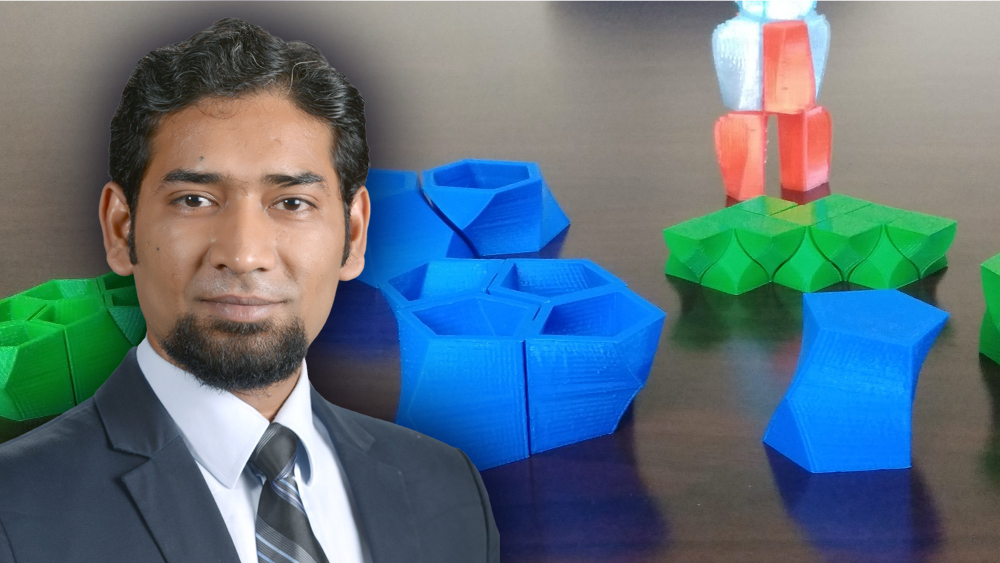
Researchers at Texas A&M University are developing a new approach to geometric modeling that could have applications in a wide breadth of products ranging from prosthetic devices and protective equipment to automotive parts and miniaturized electronics.
Dr. Vinayak Krishnamurthy, assistant professor in the J. Mike Walker '66 Department of Mechanical Engineering, is among the recipients of the 2021 National Science Foundation Faculty Early Career Development (CAREER) award, which will support his research into next-generation designs. The CAREER award is an honor designed to allow promising junior faculty to pursue cutting-edge research while simultaneously advancing excellence in education.
He hopes the award will provide him with the resources to make long-lasting contributions to the areas of design research and education.
"The funds from this award will help me define new directions at the intersection of geometric modeling, design theory, human-computer interaction and artificial intelligence," said Krishnamurthy. "The award will allow me to continue my efforts on building a solid foundation for my long-term goal — to create the next generation of design tools that augment the designers' cognitive ability for creative problem-solving. What this research hopes to accomplish in the long term is to give the control back to the designer by making complex geometric modeling available to all — real-time and intuitive to interact with, useful for serious engineering design and usable for recreational learning."
Krishnamurthy’s research introduces a new type of geometric modeling paradigm, called partitive solid geometry, which is expected to enable the intuitive and interactive design of complex 2D and 3D patterns known as space-filling shapes.
When paired with others of the same shape, these geometric shapes could have the potential to fill a space completely — leaving it watertight and without any gaps between them. By making the design of complex shapes and patterns intuitive and interactive, Krishnamurthy said his research could enable designers to create more robust materials with better architecture, or safer products that may ultimately improve the average person's quality of life.
"Imagine a computer tool where a designer could simply sketch out a shape to design a complex 3D jigsaw puzzle that has special mechanical, thermal, acoustic or optical properties," he said. "The research specifically focuses on developing the basic mathematical principles and subsequently new algorithms and interactive software workflows to enable such design."
In addition to its commercial applications, Krishnamurthy said he also sees value in the shapes for the amateur or student — further equipping them with the tools necessary to explore new ideas and creative solutions.
"With maker culture on a steep rise, more people are interested and invested in designing, making and personalizing their own products," he said. "It is now possible for a small group of individuals — in fact even an individual — to buy a 3D printer or a laser cutter and create small businesses on a shoestring budget. Making complex geometric modeling accessible to more designers and engineers is key to facilitating disruptive innovations in many engineering disciplines, including automotive, aerospace, construction, additive manufacturing, mechanics, thermo-fluids, acoustics and many other fields."
In addition to his research, Krishnamurthy's CAREER award will also help him to bring these design tools to K-12 students through a learning mechanism he calls "design-prototype-play." Using these tools, students could easily generate complex shapes and structures, use 3D printing to prototype them as puzzles and discover the basic principles of geometry by playing with the created puzzles.
"This will fundamentally transform the way children develop their spatial reasoning ability through hands-on design and prototyping activities," he said.
Krishnamurthy is creating a comprehensive plan for implementing the educational tools that will include internships for undergraduate students, a new graduate-level course on generative design, partnerships with outreach programs and a free web-based modeling tool available to the public.